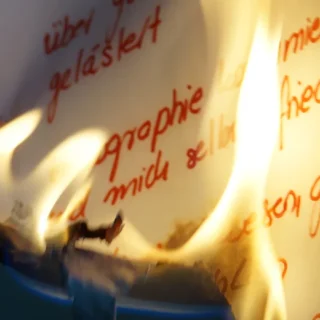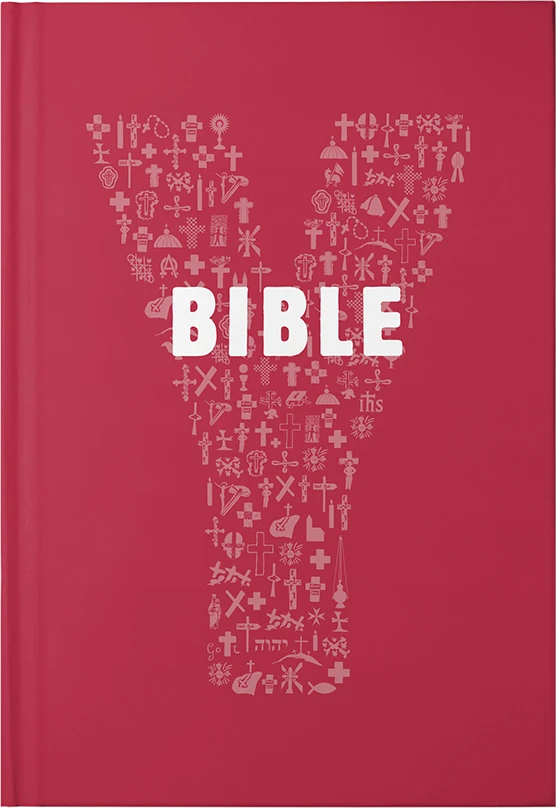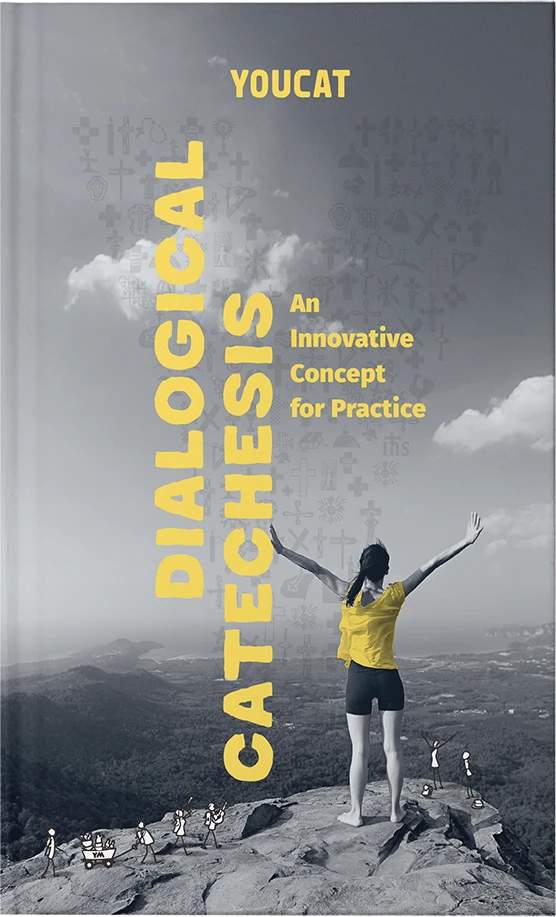

Credopedia
Divine Mercy Sunday
On the Divine Mercy Sunday we focus on the message from Jesus about his Mercy written in the Diary of St. Faustina.
What is it?
The Sunday after Easter day is celebrated in the Roman Catholic Church as Divine Mercy Sunday (also “Feast of Mercy”). It was introduced thanks to the initiative of the Holy Father, St. John Paul II who in his homily at the canonization of Sr. Faustina Kowalska on April 30, 2000, followed her visionary inspiration: “My daughter, say that I am love and mercy personified” (Diary 1074). It is important then that we accept the whole message that comes to us from the word of God on this Second Sunday of Easter, which from now on throughout the Church will be called “Divine Mercy Sunday”. Mercy is recognized not only in Christianity as the first attribute of God. It differs from compassion and the charity that often follows in from that mercy is unselfish and boundless.
What does the Holy Bible say?
YOUCAT 314 addresses the question: How do we know that God is merciful? The answer is: In many passages in Sacred Scripture God shows that he is merciful, especially in the parable of the merciful father (Lk 15) who goes out to meet his prodigal son, accepts him unconditionally, and celebrates his return and their reconciliation with a joyful banquet. Already in the Old Testament, God says through the prophet Ezekiel: “I have no pleasure in the death of the wicked, but that the wicked turn from his way and live” (Ezek 33,11). Jesus is sent “to the lost sheep of the house of Israel” (Mt 15,24), and he knows that “Those who are well have no need of a physician, but those who are sick” (Mt 9,12). Therefore, he eats with tax collectors and sinners, and then toward the end of his earthly life he even interprets his death as an initiative of God’s merciful love: “This is my blood of the covenant, which is poured out for many for the forgiveness of sins” (Mt 26,28).
The Aramaic word with which the Old Testament describes the mercy of God – rákham – has two meanings: Womb and Mercy. God cares for man as a mother cares for her child in the womb. He cannot bear the misery of his children: “Who is there like you, the God who removes guilt and pardons sin for the remnant of his inheritance; Who does not persist in anger forever, but delights rather in clemency, will again have compassion on us, treading underfoot our guilt? You will cast into the depths of the sea all our sins” (Mi 7,18-19).
A short YOUCAT-Catechesis
What is the history of Divine Mercy Sunday?
It all began in Poland, in the convent of the Sisters of Our Lady of Mercy, where Jesus revealed to a simple but mystically gifted nun – Sister Faustina – among others, the following message: Let the weak, sinful souls have no fear to approach Me, for even if it had more sins that there are grains of sand in the world, all would be drowned in the unmeasurable depths of My mercy (Diary 1059).
In another vision, Jesus asked that the Feast of Mercy be introduced on the first Sunday after Easter. Faustina presented this request to her spiritual director, Father Michal Sopoćko. She herself had doubts about asking the Church to introduce this new feast. She asked the Bishop of Vilnius, to which he replied, “If God wants it, one day there will be such a feast.” This answer was not encouraging, and Faustina complained to the Lord: But, Jesus, I have one more word to say to You; I am very surprised that You bid me to talk about this Feast of mercy, for they tell me that there is already such a feast and so why should I talk about it? (Diary 341).
The project required still much patience (and many twists of history); after all, the Feast of Mercy was not instituted until 66 years after Faustina was first inspired. During the Second World War, thanks to the efforts of Fr. Sopoćko, the image of the Merciful Jesus (a picture which Sr. Faustina herself was not quite satisfied with) and the so-called Divine Mercy Chaplet, unfurled in Poland. Initially many did not understand what this was all about and strange devotions were introduced that did not match up to the teachings of the Church. As a result, the Vatican forbade reference to revelations to Sister Faustina until they had been theologically verified. Bishop Karol Wojtyla asked theologian Ignacy Różycki to investigate it, however, he was initially skeptical of Sister Faustina and her revelations and pinned it for later. Twenty years after, he looked at the texts again became enthusiastic about them from then on.
Father Różycki’s study was sent to the Vatican and the ban was lifted. After that, everything happened rather quickly. Wojtyla became Pope and continued to research the subject of Divine Mercy. When miracles through Sister Faustina’s intercession became known, the Pope tried to complete the beatification process and declared Faustina Kowalska blessed in 1993. The question of a separate “Feast of Divine Mercy” remained open. Because Sister Faustina was not yet worldwide recognized and the feast was to be introduced for the whole Church, this still involved a great deal of attention for Pope John Paul II.
The Church rightly treats private revelations in a reserved manner. Even the famous Fatima revelations required the most critical examinations and theological studies, each of which initially served to prove that they were free of contradictions with the revelation of the Old and New Testaments and with the teachings of the Church. Therefore, in the case of the Feast of Mercy, it was decided to wait until miracles through the intercession of Blessed Faustina became known from other parts of the world, and not just Poland. This was the last hurdle to overcome for canonization.
The contents of Sister Faustina’s diary were also examined. They were often stamped as typically Polish, traditionalist, and local. Many considered them irrelevant to the universal Church. However, John Paul’s 1980 Apostolic Encyclical on Divine Mercy explains that Sister Faustina’s vision reminds us of what God has been trying to communicate to us in the Gospel and in the Church’s teaching from the beginning: “I am Mercy!” On this basis, Holy Father introduced the Feast of Mercy in the year 2000. (Decree “Misericors et miserator”, May 5, 2000).
Is Easter not enough? Do we need a kind of bonus?
The “Feast of Mercy” is celebrated in the Octave of Easter, exactly eight days after the Resurrection. We know that Jesus appeared to his disciples and to many who doubted the Resurrection at that very time. He knew that no one would be able to understand what had changed in heaven and on earth because of his Resurrection. For two thousand years, we have understood that through Jesus’, death, and Resurrection the gates of heaven have been opened for us as well. But what does this mean?
Sr. Faustina reminds us that the resurrection of Christ does not give us a free ticket to heaven. Christ has opened the gate to heaven, but it is up to us whether we go through it. Moreover, at the end of the world, Jesus will have to treat everyone justly, according to their lives. This is what is written in the diaries of St. Faustina: Write: before I come as a just Judge, I first open wide the door of My mercy. He who refuses to pass through the door of My mercy must pass through the door of My justice… (Diary 1146).
From Faustina’s writings, this Feast of Mercy is a complement to Easter. We must personally convert to God’s mercy and gather our trust in faith in that prayer inspired by Sr. Faustina, which has become a favorite prayer for many in the last years: “Merciful Jesus, I trust in you!” And we should know what Pope John Paul II, following Sr. Faustina, emphasized again and again: Mankind will not have peace until it turns with trust to My mercy (Diary 300). This is also the purpose of a special “Divine Mercy Novena“, which is particularly recommended for nine days before the Sunday of Mercy.
In YOUCAT 337 we read: For us, salvation means that we are freed by the Holy Spirit from the power of sin and have been brought back from the realm of death to a life without end, a life in God’s presence.
The parable of the prodigal son expresses in a simple but profound way the reality of conversion. Conversion is the most concrete expression of the working of love and of the presence of mercy in the human world (John Paul II, DIVES IN MISERICORDIA).

YOUCAT Digital
Discover our digital products, which will help you to grow in faith and become missionaries yourself.







